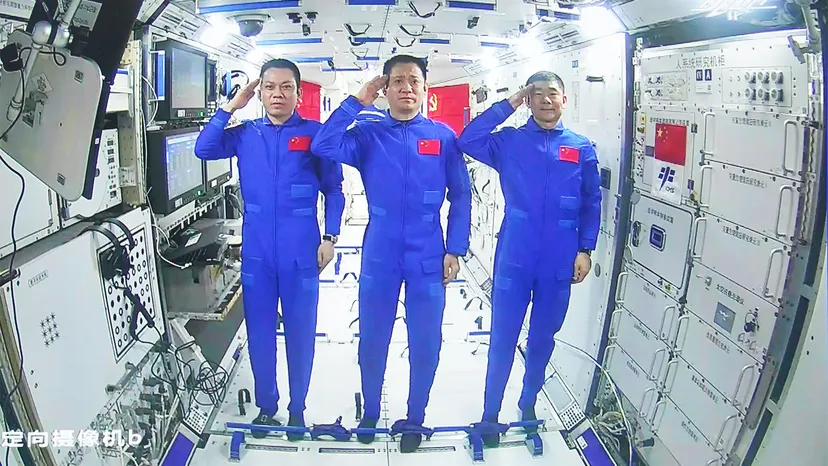In a significant leap forward for space exploration, astronauts aboard China’s Tiangong space station have successfully conducted experiments simulating natural photosynthesis, converting carbon dioxide and water into oxygen and ethylene—a hydrocarbon that can be used as rocket fuel.
This breakthrough brings long-haul crewed missions closer to reality and marks a major step toward self-sufficiency in space.
The experiments, conducted by the Shenzhou-19 crew, utilized semiconductor catalysts to replicate the natural process of photosynthesis.
This innovative approach allows astronauts to produce essential resources like oxygen and fuel directly in space, significantly improving energy efficiency and reducing reliance on Earth-based supplies.
As reported by the South China Morning Post, the technology offers a more efficient alternative to traditional methods such as electrolysis, which is currently used on the International Space Station (ISS) to generate oxygen from water.
Electrolysis consumes a substantial portion of the ISS’s power, whereas the new artificial photosynthesis system requires only one-third of the energy and relatively simple equipment.
The astronauts carried out 12 experiments using a drawer-shaped device aboard Tiangong. These experiments successfully validated critical technological processes, including room-temperature carbon dioxide conversion.
According to People’s Daily, the team demonstrated precise control of gas and liquid flows in microgravity and achieved high-sensitivity, real-time detection of reaction products.
By adjusting the catalysts used in the reactions, the technology has the potential to produce a variety of substances, such as methane and formic acid, in addition to ethylene.
As reported by Live Science, these compounds can serve as fuel for space propulsion or as precursors for other essential materials, further enhancing the sustainability of long-term space missions.
The ability to generate oxygen and fuel on-site is a game-changer for supporting extended human presence in space. China’s ambitious space exploration plans include landing astronauts on the Moon by 2030 and establishing a lunar base near the Moon’s south pole by 2035.
“This advancement in artificial photosynthesis could pave the way for humans to thrive on the Moon and beyond,” noted SciMag. “It facilitates the development of permanent lunar bases and prolonged human presence on Mars.”
The Tiangong space station has been a hub for groundbreaking experiments, including growing plants like lettuce and tomatoes in microgravity and even lighting a match in space for the first time. These achievements underscore China’s growing capabilities in space technology and its commitment to advancing human exploration beyond Earth.
The successful simulation of artificial photosynthesis represents a monumental step toward sustainable space exploration, bringing humanity closer to the dream of thriving on the Moon, Mars, and beyond.


